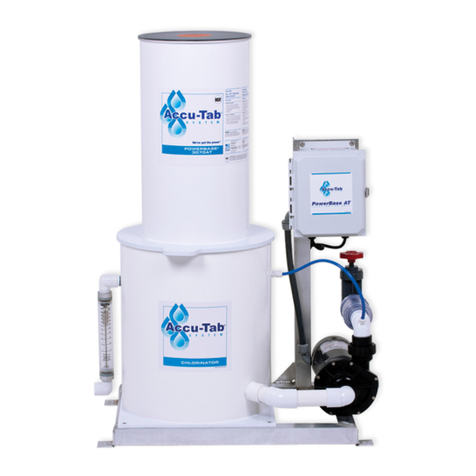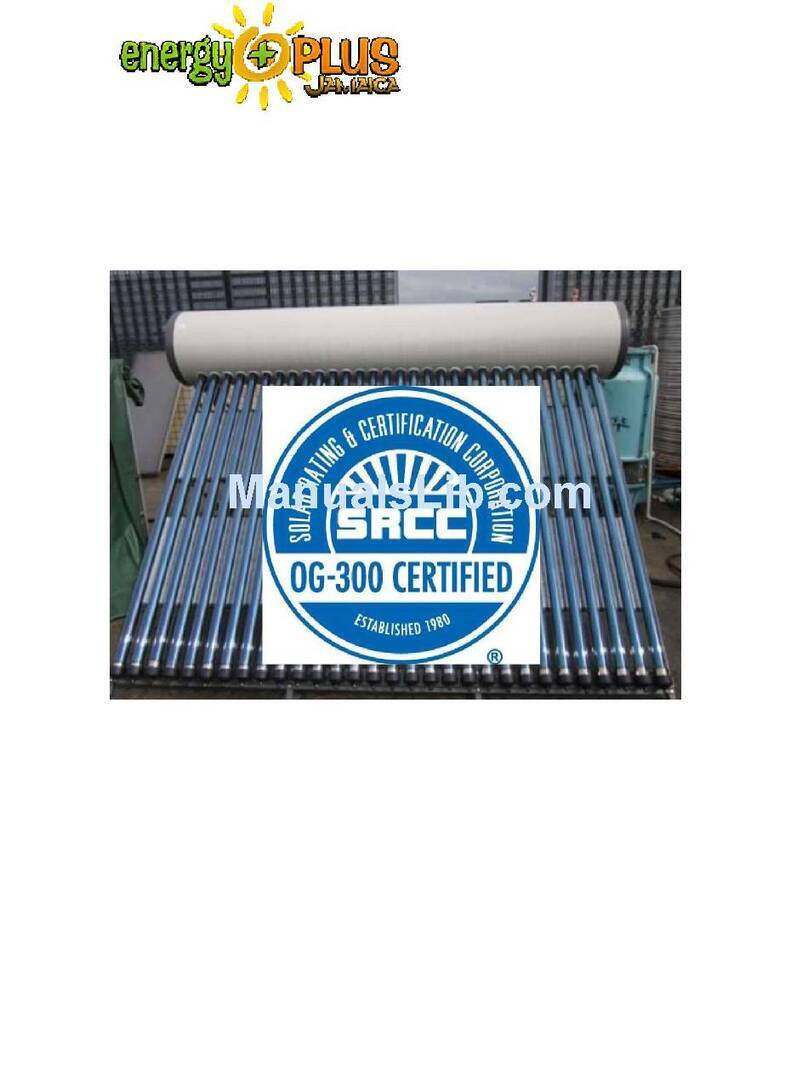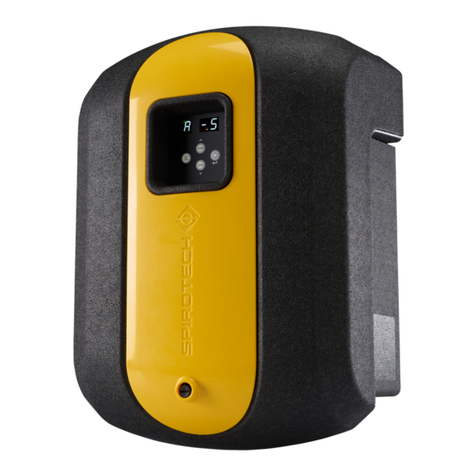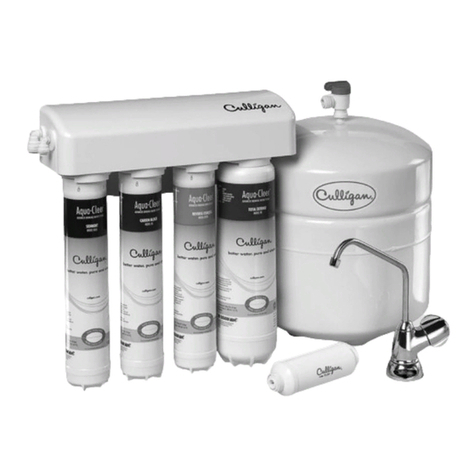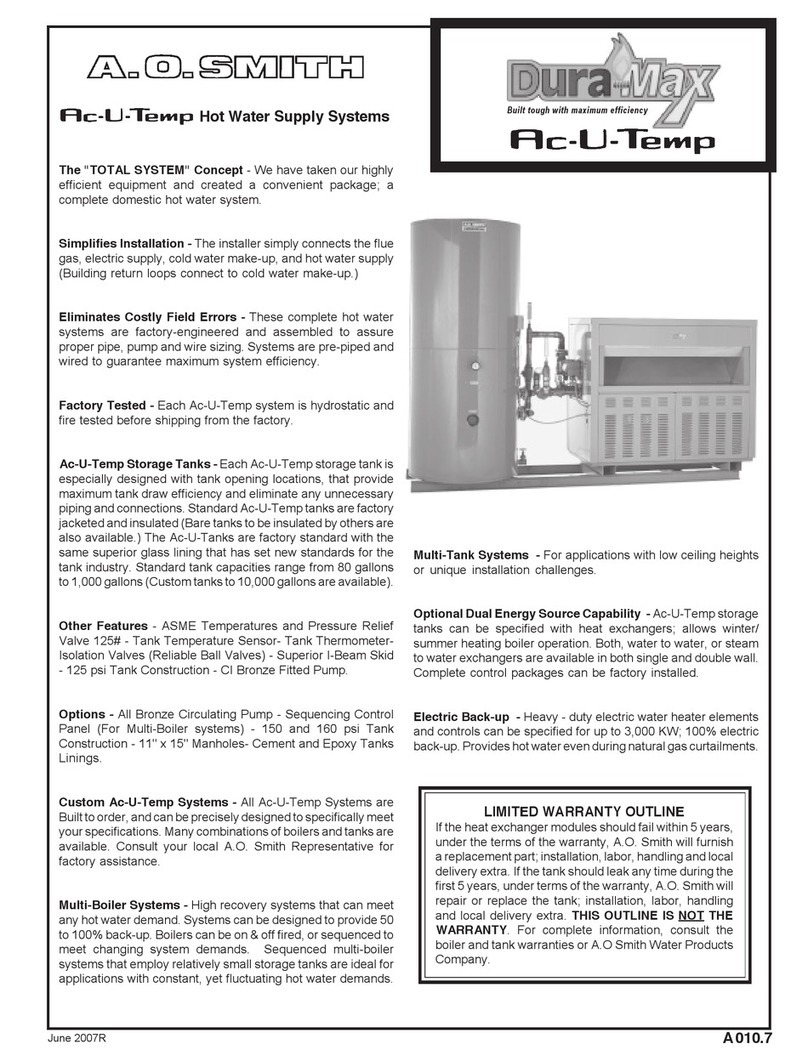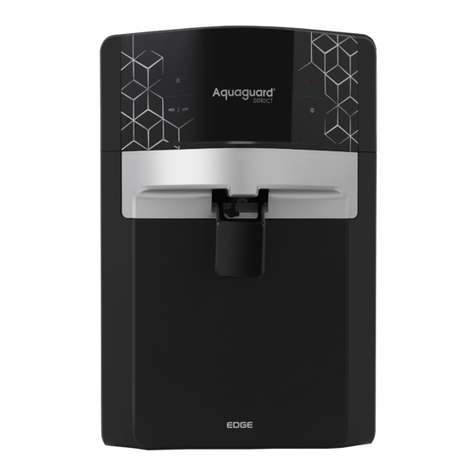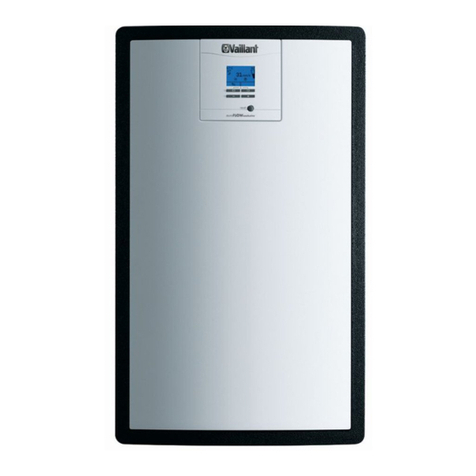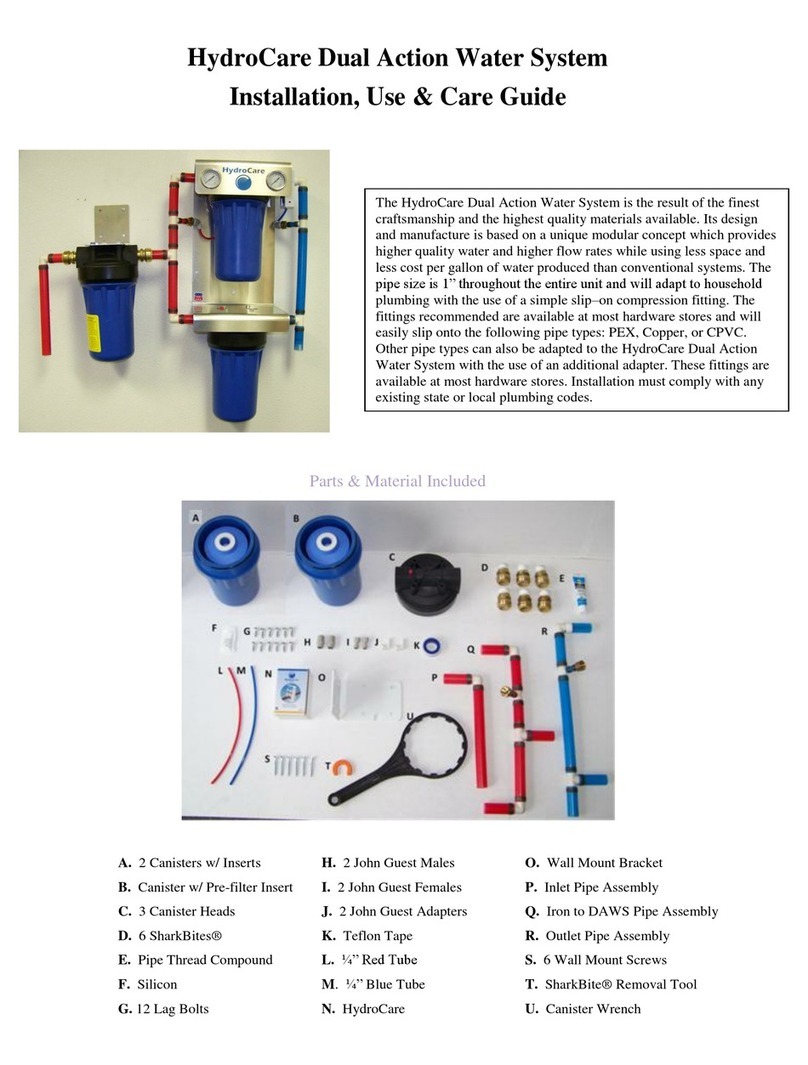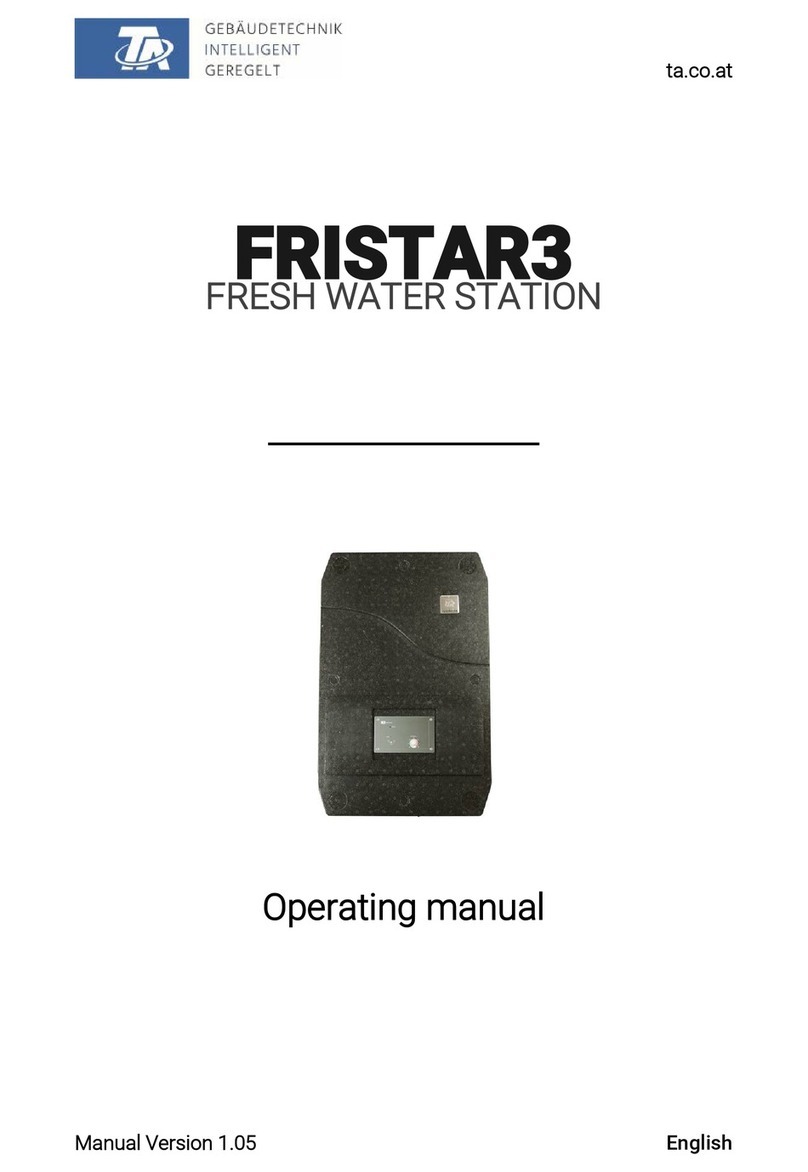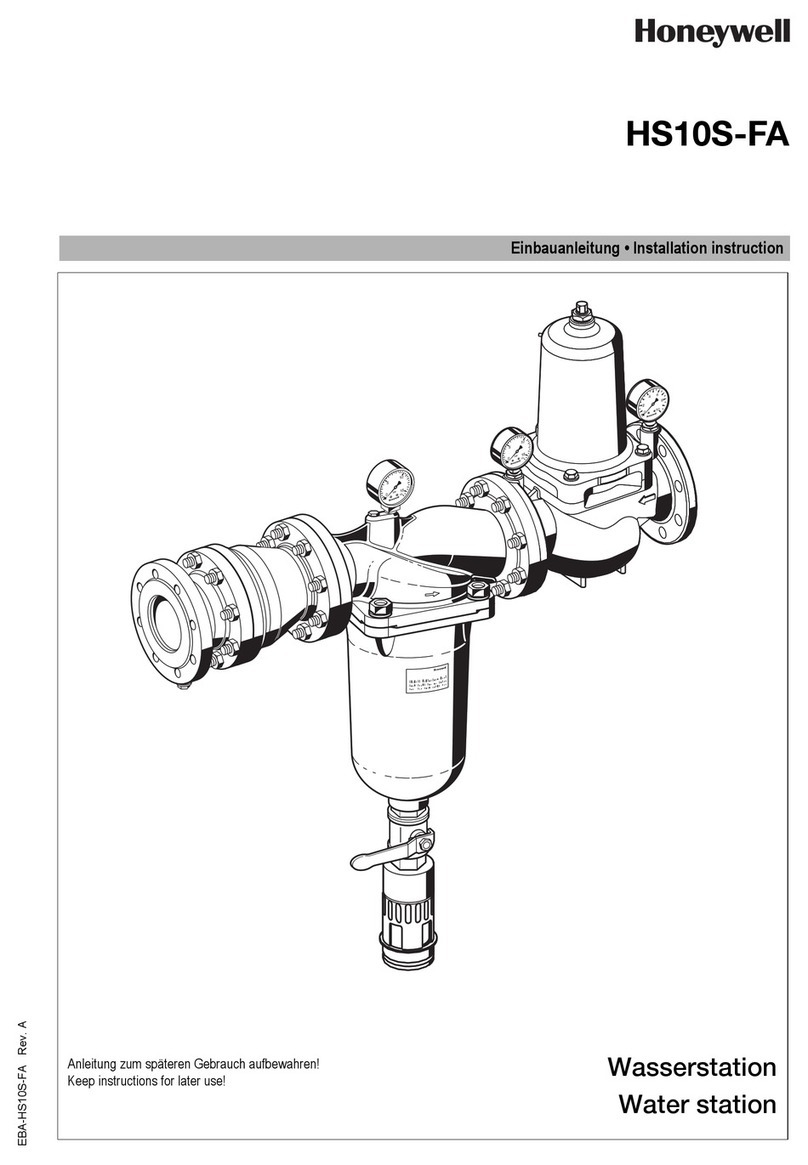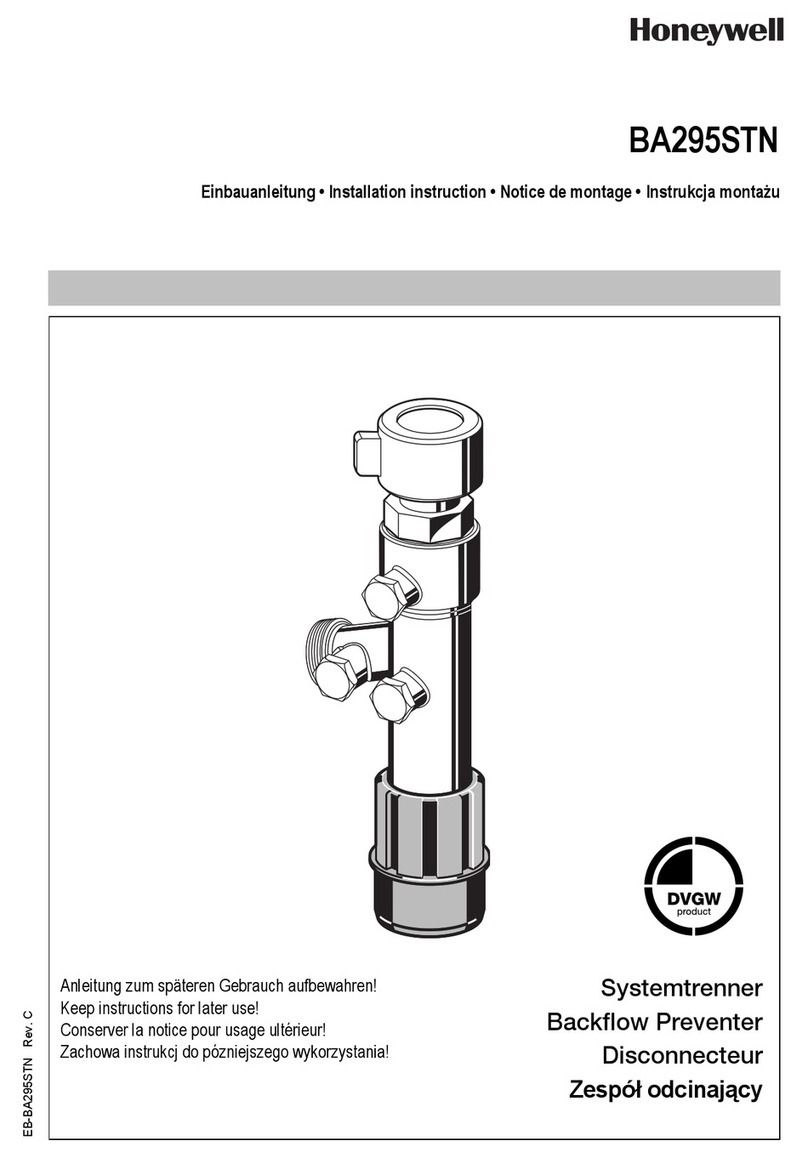
MU1H-1546GE23 R0908 2 Honeywell GmbH
D
1. Sicherheitshinweise
1. Beachten Sie die Einbauanleitung.
2. Benutzen Sie das Gerät
• bestimmungsgemäß
• in einwandfreiem Zustand
• sicherheits- und gefahrenbewusst.
3. Beachten Sie, dass das Gerät ausschließlich für
den in dieser Einbauanleitung genannten Verwen-
dungsbereich bestimmt ist. Eine andere oder
darüber hinausgehende Benutzung gilt als nicht
bestimmungsgemäß.
4. Beachten Sie, dass alle Montage-, Inbetriebnahme,
Wartungs- und Justagearbeiten nur durch autori-
sierte Fachkräfte ausgeführt werden dürfen.
5. Lassen Sie Störungen, welche die Sicherheit beein-
trächtigen können, sofort beseitigen.
2. Funktionsbeschreibung
NK300soft besteht aus einer Nachfüllkombination, die
einen Systemtrenner, Druckminderer und Absperrku-
gelhähne vereinigt, und einer Enthärtungseinheit.
Funktion Systemtrenner
Der Systemtrenner ist nach DIN EN 1717 eine Siche-
rungsarmatur und verhindert ein Rückdrücken, Rück-
fließen und Rücksaugen von verunreinigtem Wasser
in die Versorgungsleitung, in fremde Anlagen oder
andere Anlagenteile.
Der Systemtrenner ist in drei Kammern (Vor-, Mittel,-
und Hinterdruckkammer) unterteilt.
Erfolgt keine Wasserentnahme ist der Systemtrenner
unter Betriebsdruck in Ruhestellung. Die ein- und
ausgangsseitigen Rückflussverhinderer und das
Ablassventil sind geschlossen.
Bei Wasserentnahme ist der Systemtrenner in Durch-
flussstellung. Die ein- und ausgangsseitigen Rück-
flussverhinderer sind geöffnet und das Ablassventil
geschlossen.
Fällt der Differenzdruck zwischen Vordruck- und
Mitteldruckkammer unter 0,14 bar geht der System-
trenner in Trennstellung (Rücksaugen). Der eingangs-
seitige Rückflussverhinderer schließt und das
Ablassventil öffnet.
Funktion Druckminderer
Der Druckminderer setzt den eingangsseitigen Druck
(Vordruck) auf den gewünschten Druck auf der
Ausgangsseite (Hinterdruck) herab.
Der Druckminderer arbeitet nach dem Kraftvergleichs-
prinzip. Der Membrankraft wirkt die Federkraft des
Regelventils entgegen. Sinkt infolge einer Wasserent-
nahme der Ausgangsdruck (Hinterdruck) und damit
die Membrankraft, so öffnet die nun größere Feder-
kraft das Ventil. Der Ausgangsdruck wird wieder
höher, bis erneut ein Gleichgewichtszustand zwischen
Membran- und Federkraft erreicht ist.
Der Eingangdruck (Vordruck) hat keinen Einfluss auf
das Regelventil im Druckminderer. Druckschwan-
kungen auf der Eingangsseite beeinflussen nicht den
Hinterdruck (Vordruckkompensation).
Die Nachfüllkombination kann gemäß DIN EN 1717
durch Schlauch- oder Rohrleitung ständig mit der
Trinkwasserleitung verbunden werden (KTW Zulas-
sung für Schlauch erforderlich).
Nach Beendigung des Füllvorganges ist die Absperr-
einrichtung zu betätigen, um ein unkontrolliertes Nach-
füllen der Heizungsanlage zu verhindern.
Funktion Enthärtungseinheit
Die unmittelbar nach der Nachfüllkombination instal-
lierte Enthärtungseinheit arbeitet nach dem Ionentau-
scherprinzip und ersetzt die im Wasser befindlichen
Erdalkalien wie Calcium und Magnesium durch Natri-
umionen.
Abhängig von der regionalen Wasserhärte wird über
die Einstellung der Verschneideeinheit das Wasser
wahlweise teilenthärtet (<8°dH) oder vollenthärtet
(<0,11°dH).
3. Verwendung
4. Technische Daten
Medium Wasser
Vordruck max. 10,0 bar
Hinterdruck einstellbar von 1,5-4 bar
voreingestellt auf 1,5 bar
Flüssigkeitskategorie
Systemtrenner BA
4 (giftige, sehr giftige,
krebserzeugende, radioak-
tive Stoffe)
Geeignet für Heizungsanlagen mit folgenden
Werkstoffen: Stahl, Kupfer, Kupferlegierungen
und Kunststoffe.
Aufbereitetes Wasser hat veränderte korrosi-
onschemische Parameter. Eine Konditionie-
rung mittels Inhibitoren ist separat vorzusehen.
Einbaulage waagrecht mit Ablauf-
anschluss nach unten
Betriebstemperatur max. 30 °C
kvs-Wert 0,45 m3/h
Druckminderer Anschluss
Kugelhahn Systemtrenner
G 1/4"
Ablaufanschluss HT 50
Anschlussgröße 1/2" Außengewinde
